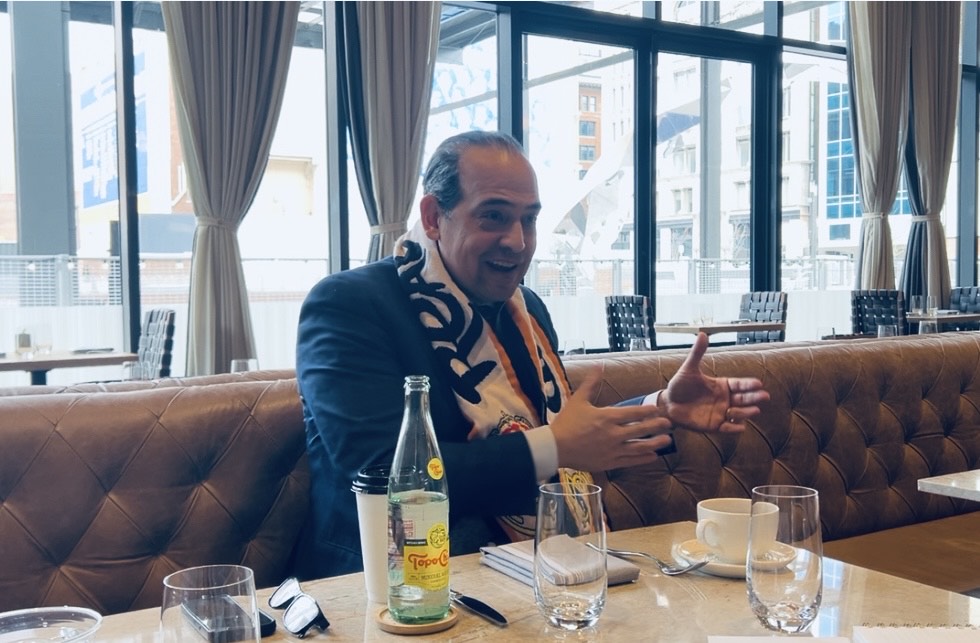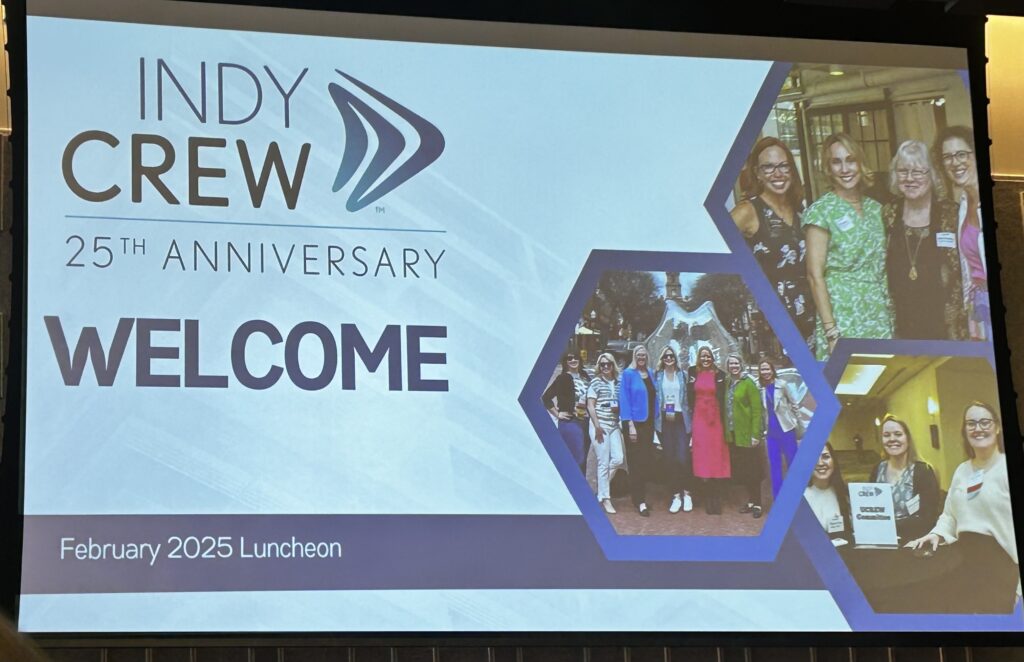Client Strategist and Senior Economic Advisor of CBRE
Spencer Levy, the Global Client Strategist and Senior Economic Advisor for CBRE, sat
down to talk to us about global trends shaping the commercial real estate sector. He noted two
mega-trends to look out for: the reshoring of manufacturing and the movement of the nexus of
economic activity from central business districts to Live-Work-Play neighborhoods. “There are
different drivers for each of these. The manufacturing shift is particularly important for places
like Indiana because of large farmland, water, cheaper power, and a friendly business
environment, which is going to draw businesses from outside the market into the district’s
market.
The appearance of manufacturing facilities spurs demand for various real estate sectors.
Initially, this demand is centered around industrial spaces, but as communities develop around
these manufacturing hubs, the demand expands to include retail and multifamily
developments.”
Spencer made a comparison using our meeting place, “where the shift from central business
districts, kind of like where we’re sitting right now, into smaller Live, Work, Play neighborhoods
where there are apartments, where there’s retail, where there are restaurants. I would say
those are the two major trends from a real estate perspective.”
He alluded to the impact of interest rates as an important factor to consider as well. “However,
if we pull the lens back and talk about what is driving business positively or negatively, the
interest rate environment over the last three years has impacted businesses. This is
particularly challenging for real estate businesses that are sensitive to interest rate fluctuation.”
When asked about the Live-Play-Work model and the shifts it brings, Spencer
expanded: “There’s a movement or a transformative shift from centralized business districts
to smaller, mixed-use neighborhoods, for seamlessly integrated residential, commercial, and
entertainment spaces. We’ve seen cities like Miami provide excellent case studies, where
areas like Brickell and Wynwood have become vibrant economic hubs. Creative industries,
including architecture, law, and technology, are gravitating toward such neighborhoods
because they foster innovation and collaboration.
It’s all a virtuous cycle. It used to be that you lived, worked, and played in three separate
places. Now, people want that to be in one place. This repositioning is largely driven by
demographic changes, as younger professionals are delaying marriage and parenthood,
allowing them to embrace urban living for longer periods. The modern workforce prefers
environments that blend work with social and recreational amenities, making mixed-use
developments increasingly attractive. This has also prompted another switch that is underway
in urban development. As centralized businesses lose ground to smaller, mixed-used
neighborhoods that combine residential, commercial, and entertainment spaces, creating a
one-stop vibrant environment for both residents and businesses.”
Spencer highlighted a core element people often misunderstand in real estate: “I don’t think
you can amenitize your building to success, meaning you can’t take a building and put in the
best amenities, e.g. gym, restaurant, pickleball court, whatever it might be. They need to think
about what will give them that success, and that is a community or a submarket.”
Spencer is a big believer in submarkets. “People ask me all the time, what markets do I like?
I’m like, none. But I like a lot of submarkets… And the reason I like the submarkets is because
you could be in a market like Chicago, which is struggling overall, but they have some terrific
submarkets there. The River North and Fulton market is terrific.”
Regarding the evolving trends across different industries globally, Spencer had a clear
direction for ways in which industry leaders could adapt and plan for the future.
I like the term virtuous cycle. So when you’re in the creative industries, call it Tech, call it Life
Spencer Levy
Sciences, call it Art, they like to be together. There is value to being together that goes beyond
simply cool and happy.
“These industries can feed off each other and make each other more
creative. They can make each other better. In real estate today, the key is one word:
EXPERIENCE!” Spencer shares that experience needs to be the key driver, not just of office
but of all forms of real estate. In a post-pandemic world, companies must focus on experience-
driven real estate. Traditional office spaces need to evolve to make employees feel productive
and engaged, retail spaces need to create memorable shopping experiences, and hotels
should offer unique stays that differentiate them from short-term rental options like Airbnb.”

In terms of AI, PropTech, and Smart Buildings, Spencer responded to the way AI,
PropTech, Smart Buildings, etc are influencing real estate strategy: “I have a different
answer today than I had a year ago. A year ago, my answer was that there are two types of
technologies: one that helps operate the physical space and the predictive – it tells you where
to go. There are unique systems such as fire retarding systems, and others that track and
measure our physical use of spaces. I’ve changed my answer because now I think we’re just at
the beginning of such predictive technology measuring not only our presence but our
engagement as well. Technology is fundamentally altering the real estate landscape through
AI, PropTech, and smart buildings. There are two key dimensions to this technological
revolution:
- Operational Efficiency – The Internet of Things (IoT) has already enhanced building
management, optimizing energy consumption and space utilization. - Predictive Analytics – The next frontier in real estate technology lies in measuring how
spaces enhance productivity and well-being. Future innovations will focus on assessing
engagement levels in physical environments, ensuring that real estate investments yield
not just financial returns but also experiential value.
There are certain factors that can help us predict the best location for a business, such as the
location of a subway stop or an arena. However we are not yet able to predict other factors,
such as whether to lease the first, second, or third floor or what the configuration of the space
should be. Despite these advances, predictive real estate technology—such as determining
the best location for a business beyond basic infrastructure considerations—We are at the
beginning stages…”
When asked about female representation in commercial real estate and his presence at
the IndyCREW luncheon, Spencer shared that while there are some women, there are
not enough. He mentioned that CREW led to him getting his big break in San Antonio. He

continued, “I will say this: some of our most successful professionals are women. I’m very
proud that at CBRE, some of our most successful professionals are women, and I am
privileged to have some of them as my friends. One might ask how they did it. The good old-
fashioned way of working hard and better coupled with clients appreciating their work ethic
which gave them a little bit of a differentiator in any room they are in.”


